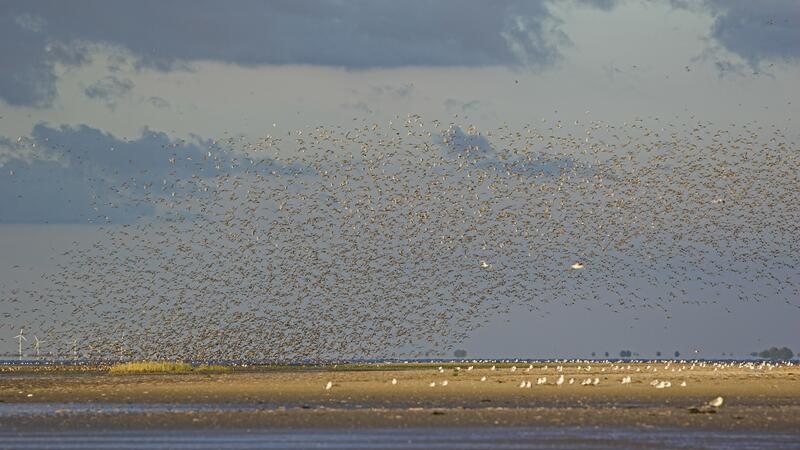New report shows current trends of migratory waterbird populations on the East Atlantic Flyway

Every three years, simultaneous bird counts are conducted in the countries along the East Atlantic Flyway. In January 2023, over 13,000 people from 36 countries made a joint effort to count migratory birds at more than 7,000 sites along the East Atlantic Flyway. On occasion of World Migratory Bird Day, a newly published report based on extensive analysis of the flyway count data presents key findings for managers and policymakers along the flyway. The endeavour is organised by the Wadden Sea Flyway Initiative of the Trilateral Wadden Sea Cooperation in collaboration with BirdLife International, Wetlands International, and numerous local and international partners.
The simultaneous counts allowed to calculate trends in numbers for 88 flyway populations: 33% of the surveyed populations are decreasing, while 42% are increasing and 25% are stable. The results of the past ten years of monitoring reveal a gradual shift with more populations having started to decrease. This is a general trend in shorebirds breeding in the Siberian Arctic and wintering in West Africa, such as Bar-tailed Godwit und Red Knot. However also short-distance migrants like Dunlins, Redshanks, and White-fronted Plovers are in decline. “Migratory birds are not only reliant on the Wadden Sea – they require suitable conditions in a network of sites where they breed, migrate, and spend the winter,” explains Kristine Meise, Coordinator of the Wadden Sea Flyway Initiative. “So, to reverse the negative trends of these long-distance migratory birds we need close international cooperation.”
Growing pressures on bird migration range from overfishing, habitat loss, climate change to tourism and poorly managed infrastructure developments. These pressures cause the degrading of critical sites along the flyway and contribute to species declines. “We need advanced monitoring and research efforts, including projects on breeding success, survival rates, and the impact of environmental conditions, to develop tailored management and conservation measures to counteract these issues,” says Meise. New projects of the Wadden Sea Flyway Initiative aim to address this gap and to provide a basis for more sustainable management and stronger legal protection of migratory birds.
Millions of waterbirds travel along the East Atlantic Flyway, reaching from the Arctic via the Wadden Sea to Africa. Some populations travel as far as Siberia and South Africa. Due to its strategic position along the flyway, the Wadden Sea is a vital refuge for more than ten million migratory waterbirds on their journey. Since 2012, the Wadden Sea Flyway Initiative of the Trilateral Wadden Sea Cooperation works together with numerous partners to support the conservation of these birds.
